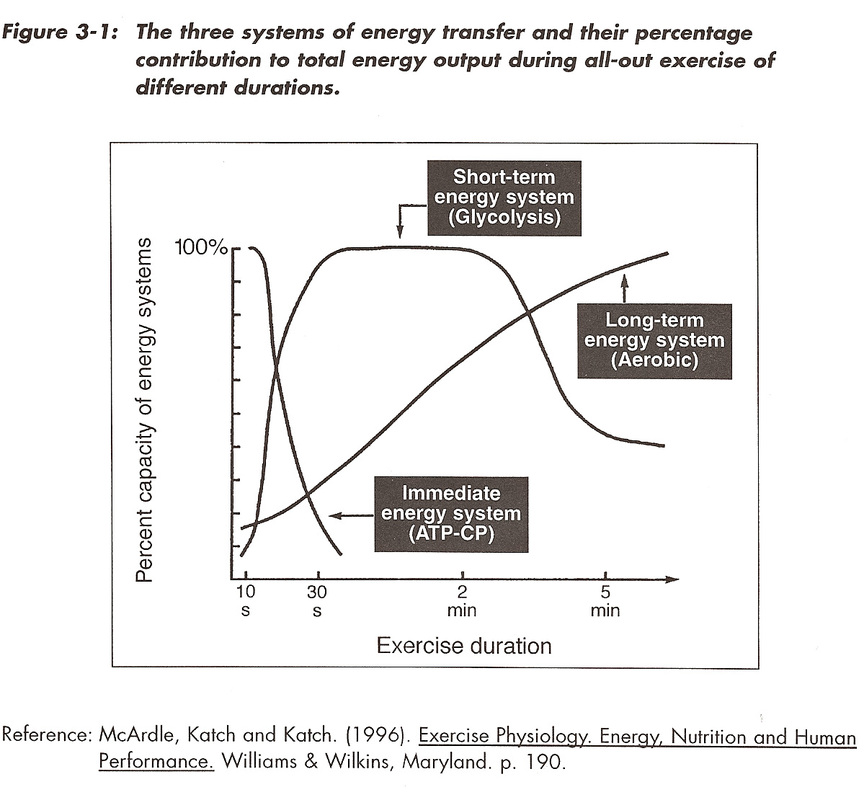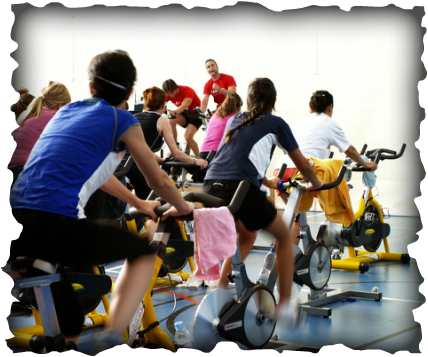|
In my previous post on using the energy systems in your indoor cycling class, I discussed the aerobic energy system and provided a drill that would challenge your participants’ aerobic power. Now continuing down the list of energy systems most used in spin, the focus shifts to the first of the two anaerobic, or short duration, energy systems. This post will focus on the anaerobic lactic (also called glycolytic) system. Here’s a quick refresher on the energy system and how we should focus our drills to use it effectively. The anaerobic energy systems are the systems in which oxygen is not required to make energy. They are what fuels our initial movements when we start exercising and they are what work extensively at high intensities. The anaerobic lactic energy system, specifically, is able to generate small amounts of ATP but is also relatively faster at making energy compared to the aerobic energy system. This also holds true for the anaerobic alactic system, the quickest system, which will be the focus of the third and final post on this topic. As stated in my previous post, it takes the aerobic system time to generate energy and so the body uses anaerobic glycolysis to make energy within the first couple minutes of exercise. Put more simply, instead of using oxygen within the cells to generate energy, it is able to produce ATP via a cascade of chemical reactions. The problem with this energy system is the by-product it produces, namely lactic acid, which breaks down into excess hydrogen ions and increases the acidity of the working muscle cells. Why is that a problem? Well, increased acidity causes stimulation of the nerve endings causing pain, decreased muscle contraction and fatigue. Performance suffers! Kind of like hitting a brick wall! When these by-products are accumulating in the body, the tipping point for a lack of a better word is called anaerobic threshold (also closely related and referred to in the literature as lactate threshold and/or ventilator threshold). Without going through the gory details, it is sufficient to say that by training close this anaerobic threshold, we can improve our performance. So how do we apply our knowledge of the anaerobic lactic energy system and anaerobic threshold to our drills? Well, let’s look at the appropriate work to rest ratio, the time it takes our bodies to recovery from anaerobic work. For anaerobic lactic work, we must design sessions with the ratio 1:2 to allow the muscles to recovery and remove (as much as they can) the nasty by-products. Typically, this energy system kicks in at around 15 seconds out to about 120 seconds. Power drills work very well with the anaerobic lactic energy system. By incorporating multiple groups in the drill, you can build in the appropriate recovery for each participant. Let’s take a look on how to set this up. Photo credit: Universidad Europea de Madrid's photostream Split your class into three equal groups and/or teams. Feel free to have each group pick a team name or if you don’t want to confuse yourself with cueing keep it just group A, a group B and a group C. Each group will have 30 seconds of power while the other two groups recover (over 60 seconds). Group A WORK: 30 seconds of seated power (RPE = 8-9/10). Group B & C REST: 60 seconds light spin out (RPE = 1-2/10). Group B WORK: 30 seconds of seated power (RPE = 8-9/10). Group C & A REST: 60 seconds light spin out (RPE = 1-2/10). Group C WORK: 30 seconds of seated power (RPE = 8-9/10). Group A & B REST: 60 seconds light spin out (RPE = 1-2/10). The above drill can be completed with standing power as well but ensure recovery is in the seated position. Repeat drill 3-5 times depending on the general physical fitness of your class. To make it more difficult, you can also extend the work time to 45 seconds and the recovery to 90 seconds. Take a peek at my previous hockey drills post for more ideas, as most hockey players use the anaerobic lactic energy system the most throughout a game. So why bother working at a higher intensity with the anaerobic lactic energy system? This energy system allows for a burst of energy, a jump in your step (pedal) so to speak. It’s the system that most helps with short acceleration in sports, think of it as the breakaway energy system that allows pushing the pace and crossing the finish line first! Stay tuned - there is one more to come on the anaerobic alactic energy system. Postscript: I found this great YouTube video that helps demonstrate the energy system process. Enjoy!
5 Comments
Siwy
4/13/2019 10:50:57 am
Hej,
Reply
Lisa Workman
11/25/2020 06:37:43 pm
Heart rate is variable from person to person so I prefer to have a subjective measure such as the Rating of Perceived Exertion (RPE). If someone has a true maximum heart rate to work with (i.e., had a maximal graded exercise test), then a heart rate may be between ~80-90% of maximum heart rate.
Reply
Lisa Workman
11/25/2020 06:35:19 pm
Thanks! Glad it was useful for you!
Reply
12/2/2022 02:44:14 am
Thanks for sharing such a great information. Its really helpful. I always search to read the quality content. Thanks.
Reply
Leave a Reply. |
Workman's Cycle Drills & Skills
Enjoy some of my favorite cycle workout drills either in a cycle class or on your own bike at home! Archives
September 2013
Categories
All
|
Edmonton, Alberta


 RSS Feed
RSS Feed